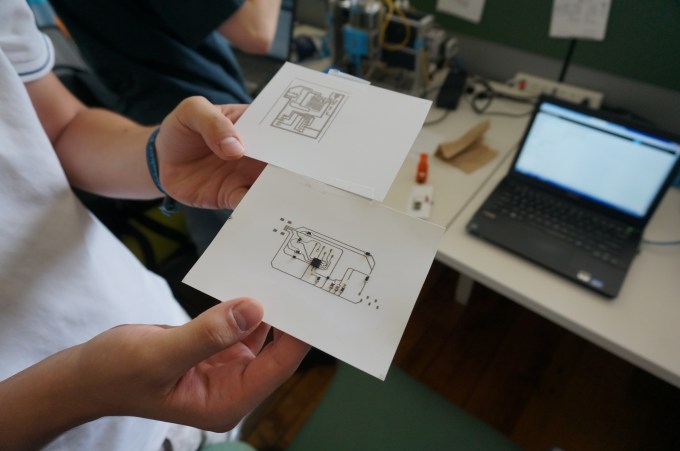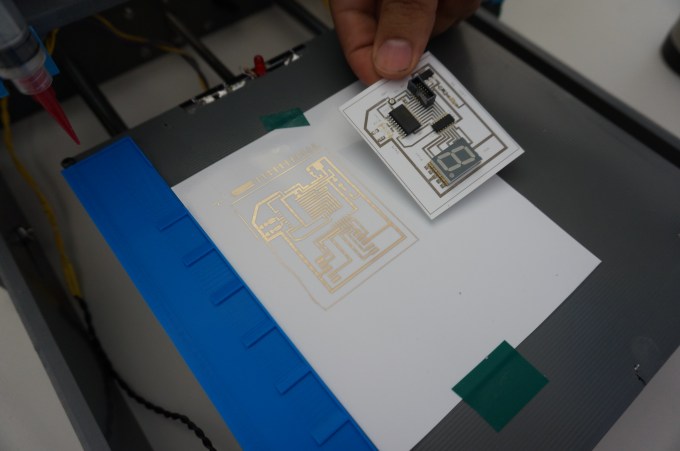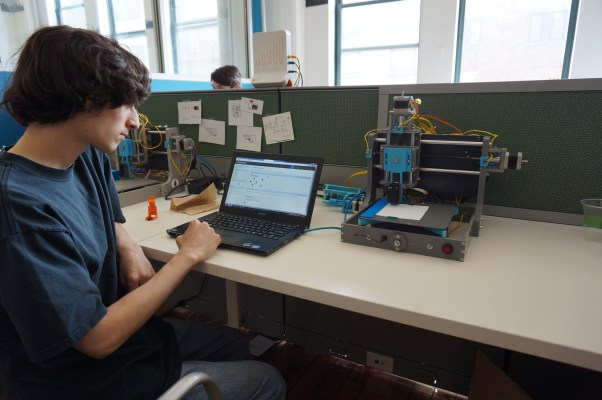3D printing has changed the way engineers test products, allowing them to cut down on time and costs. But what about 3D printing the components that go into most of these products?
Botfactory computer engineer Carlos Ospina said that most of the people he encountered didn’t believe it was possible. But he’s proven them wrong with Squink, a portable circuit board factory that allows you to test your project in minutes in the comfort of your home — costing around $2 to print.
Launched on Kickstarter last week, Squink prints conductive ink on specific materials such as photo paper or glass. In the span of about three days, Ospina and his team have raised about $24,000 on Kickstarter.
The circuit board is designed through a web-based portal usable only with Squink plugged in. The printer applies conductive glue dots onto the ink and then picks up components from a tray, aligns them and places them on the glue dots.

Botfactory and Squink were created by a group of engineers who met at NYU Polytechnic School of Engineering. Ospina said Squink can get anyone interested in circuit building because the portal requires no prior knowledge about circuitry and is simple to use.
You can also find a circuit board you’re interested in building online and input that into the Squink portal.

They don’t want Squink to replace the current process of sending projects to manufacturers to build but want it to be a tool for people to test out their ideas immediately, without having to create a delay in the creative process.
“We really want to be a stepping stone — try it out really quickly and once you’re ready, then you crank out about 100 boards from a manufacturer,” said Nicholas Vansnick, the team’s robotics engineer.
They are planning to sell the printer with a cartridge of conductive ink, cylinders of the conductive glue and a standard set of components. A cartridge of conductive ink can print about 100 boards, while one cylinder of the glue is for a single use.
If a user wants to buy more or different components, Ospina said they’re looking into ways to let the user buy them through their website.
The printer is still a prototype and the design is incomplete; as the Kickstarter dials down, they’re continuing to work on ways to make it look sleeker and be more portable and precise.
